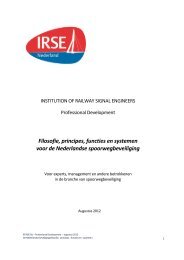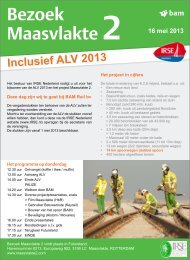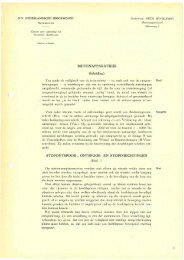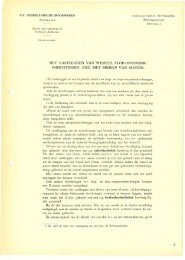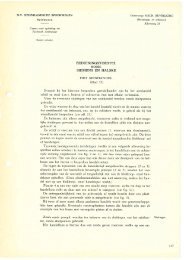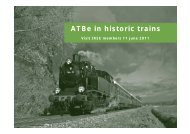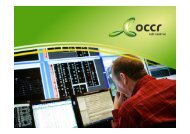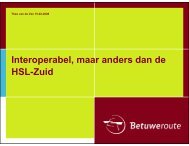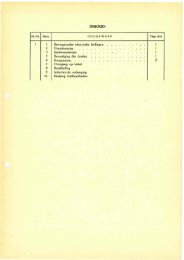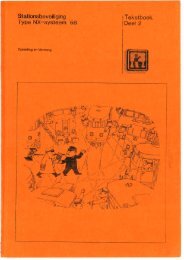intermittent and continuous ATP 101119 - irse.nl
intermittent and continuous ATP 101119 - irse.nl
intermittent and continuous ATP 101119 - irse.nl
- No tags were found...
You also want an ePaper? Increase the reach of your titles
YUMPU automatically turns print PDFs into web optimized ePapers that Google loves.
Some parts of the train control system are intrinsically part of the train. Forinstance the safety brake circuits <strong>and</strong> round train circuits, common to most rollingstock, will be conditioned by the outputs from the train control system. Therefore staffengaged in fault finding of these circuits must have a solid underst<strong>and</strong>ing of both thetrain <strong>and</strong> the train control system.Having accurate, clear information about interfaces between the system <strong>and</strong> therest of the equipment, <strong>and</strong> the dependencies between them, is important for bothdesigners <strong>and</strong> maintainers.Some parts of the train control system, for instance any equipment mounted tothe bogies, will be affected every time the bogies are removed or replaced, <strong>and</strong>therefore existing rolling stock procedures will need to be modified to include thenecessary uncoupling / coupling / re-testing of these devices. Typical examples arespeed sensors, antennae, <strong>and</strong> balise readers.Interactions between the train control system <strong>and</strong> other equipment on the trainare not restricted o<strong>nl</strong>y to interfaces. Systems can also suffer from “unintendedinteractions”, <strong>and</strong> designers need to be aware of these <strong>and</strong> of the limits ofperformance of the systems, as well as the environment in which they are expectedto work. For example, the inability of speed sensors to cope with the level of shock<strong>and</strong> vibration transmitted from the track has been a common problem with many traincontrol systems. Similarly, excessive heat in an equipment cubicle has necessitatedin some cases the installation of fans to cool electronic components.Software And DataThe software /data context diagram illustrates a typical Software / Data ContextDiagram for a train control system. The diagram suggests a highly modularisedstructure for the software <strong>and</strong> data contained within the train control system <strong>and</strong>although modern systems tend to adopt this approach, the same is not always true ofolder systems.Like other critical software-based systems, train control systems use a variety ofwell- established techniques to defend against unauthorised / poorly executedmodifications to software <strong>and</strong> data, but ultimately there is inevitably a dependencyupon the competence of personnel engaged in programming <strong>and</strong> data preparation,particularly for non-st<strong>and</strong>ard elements.20





